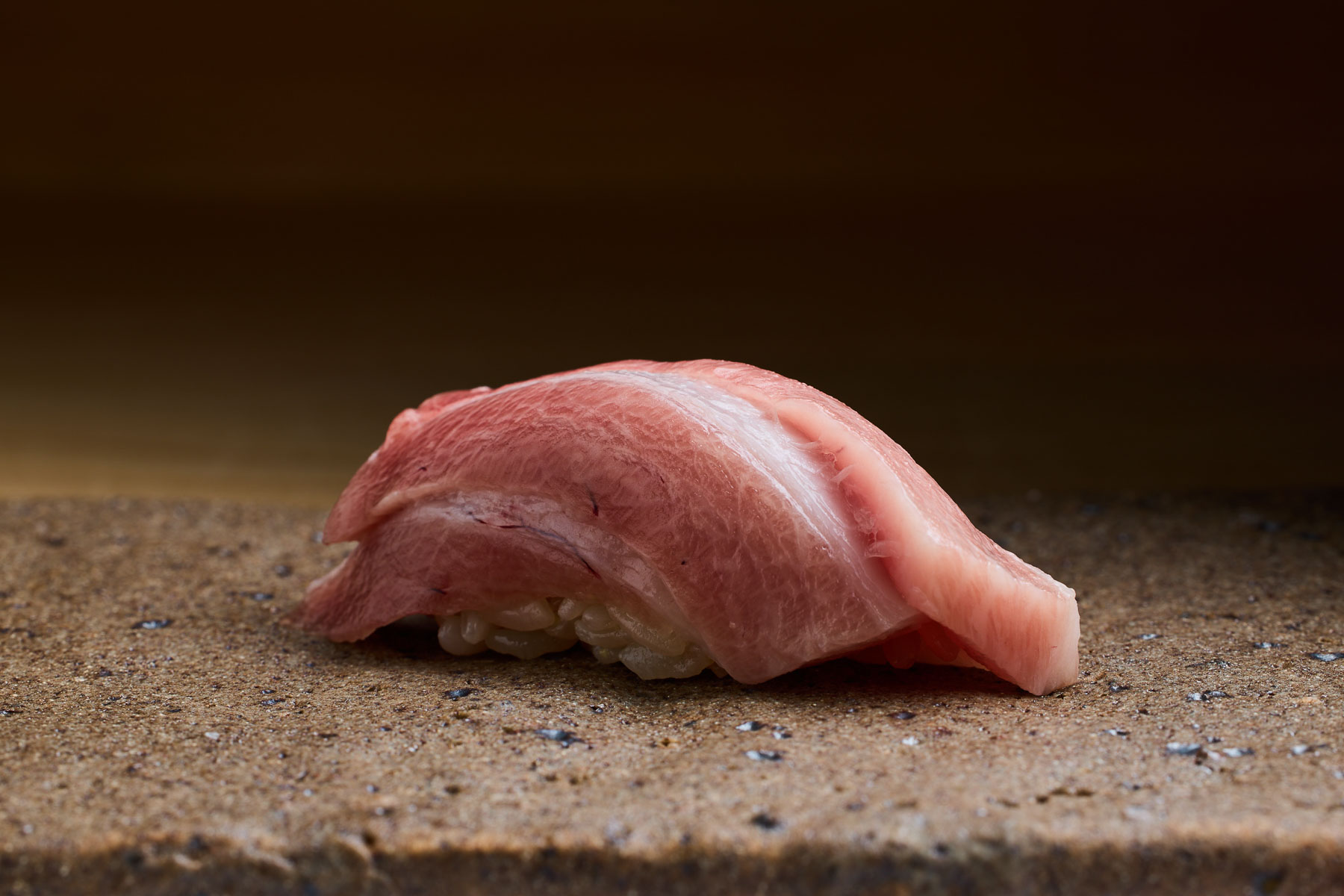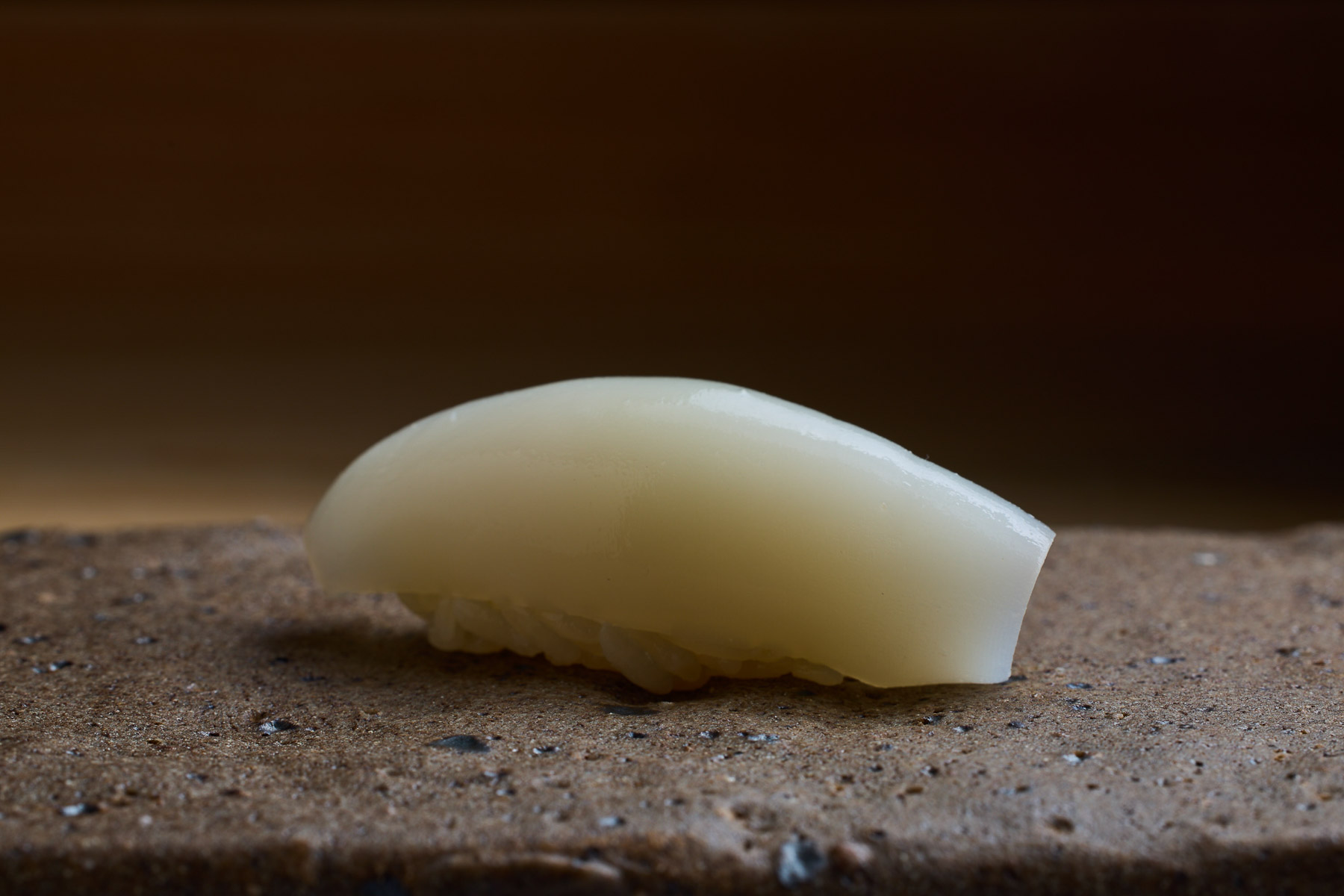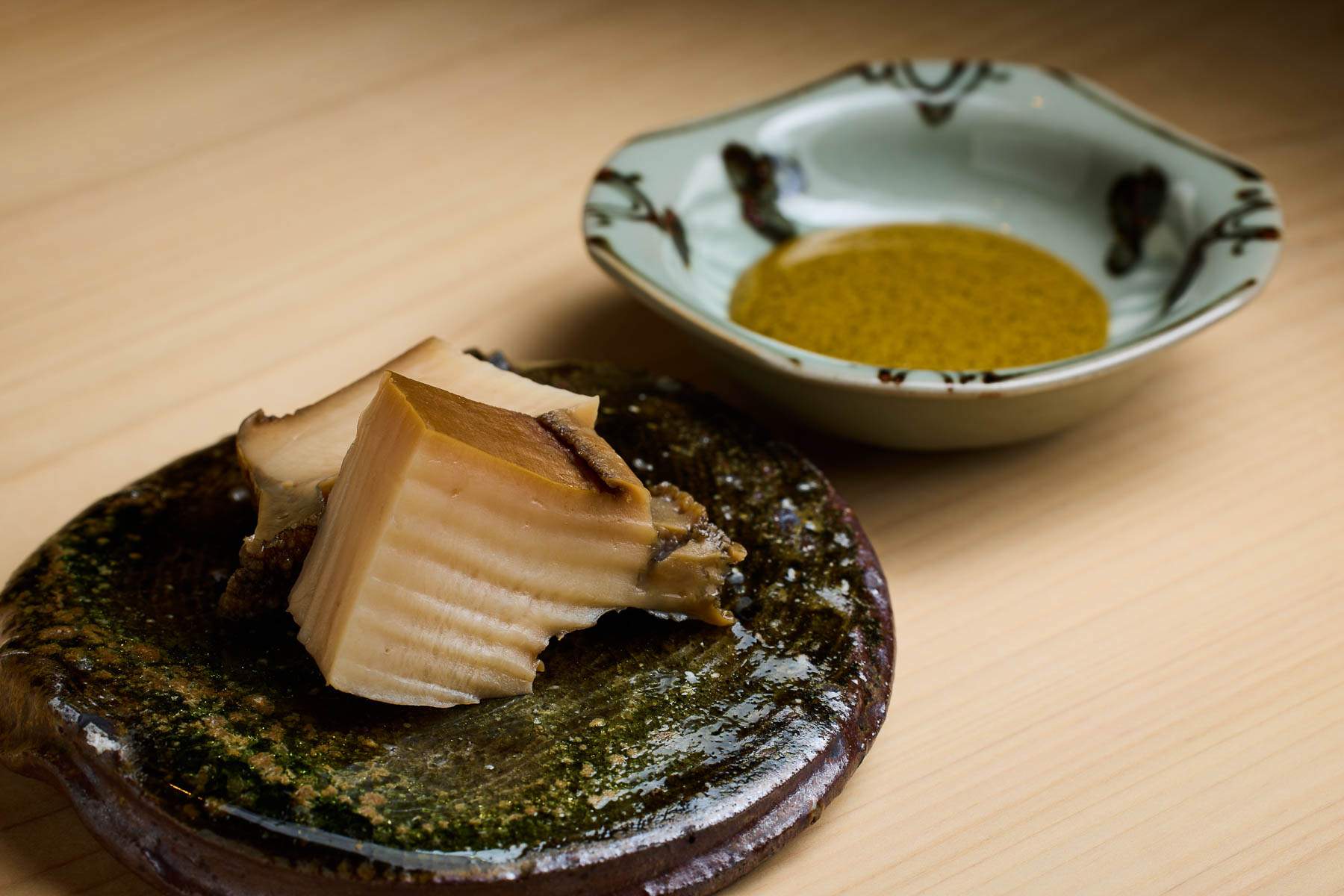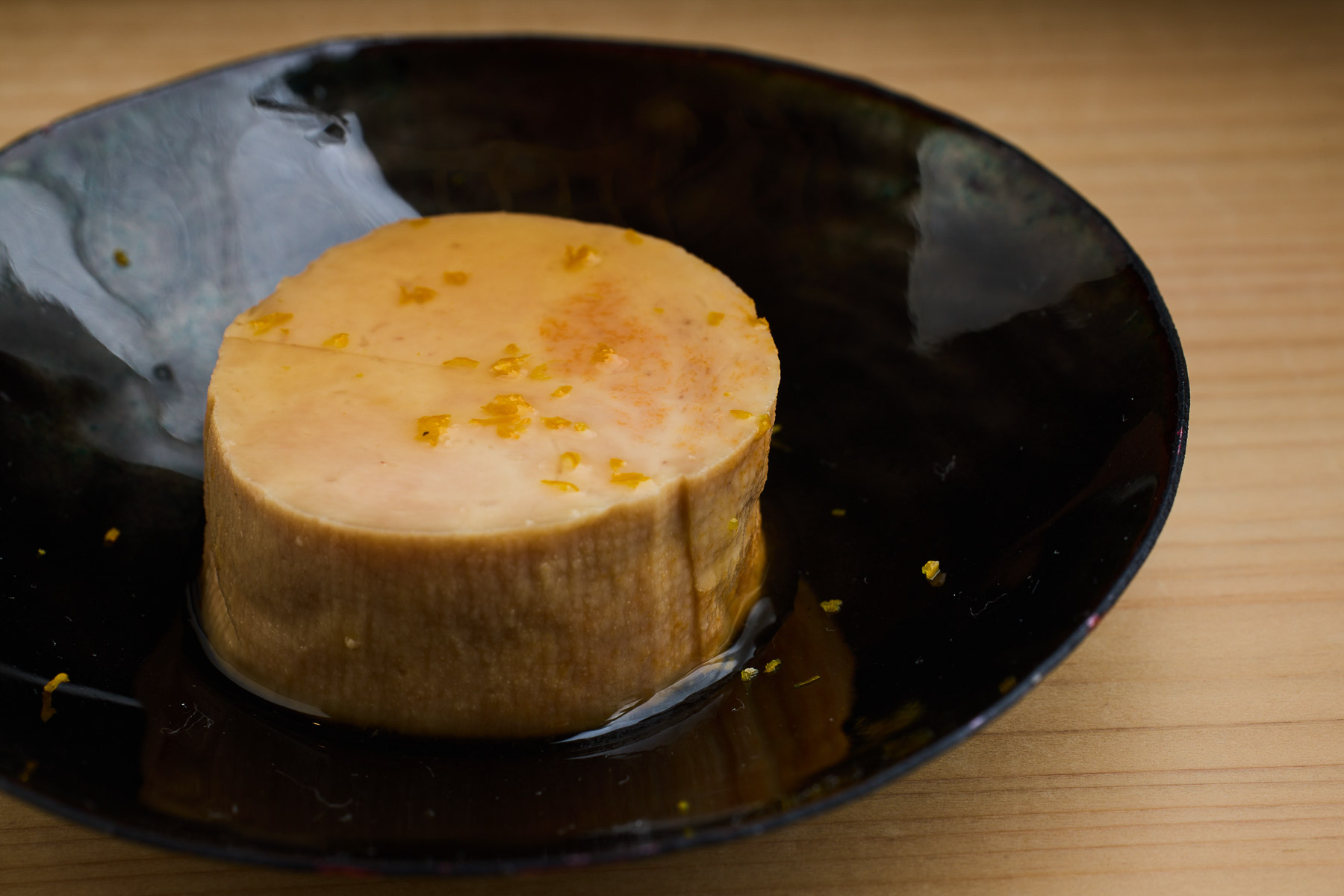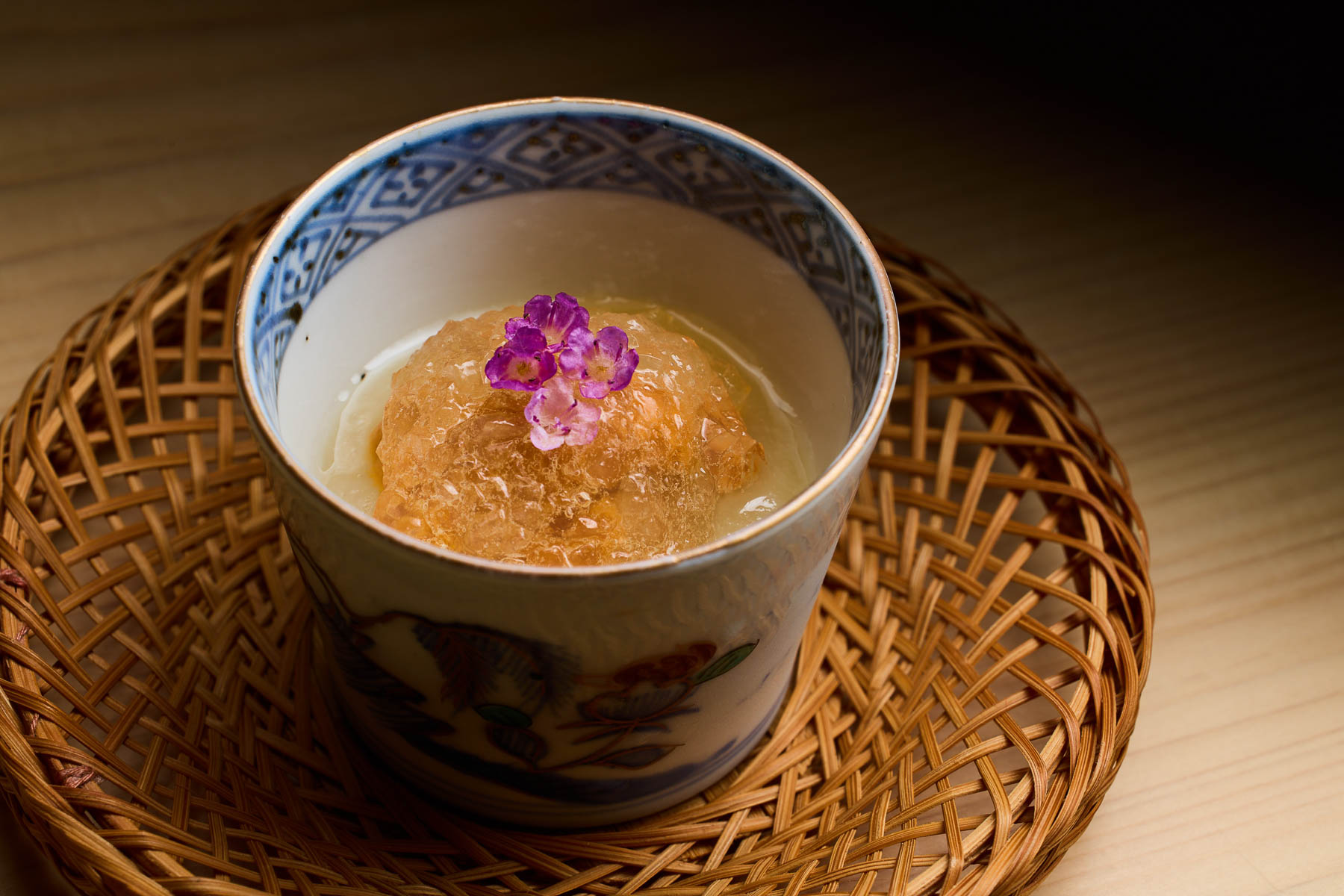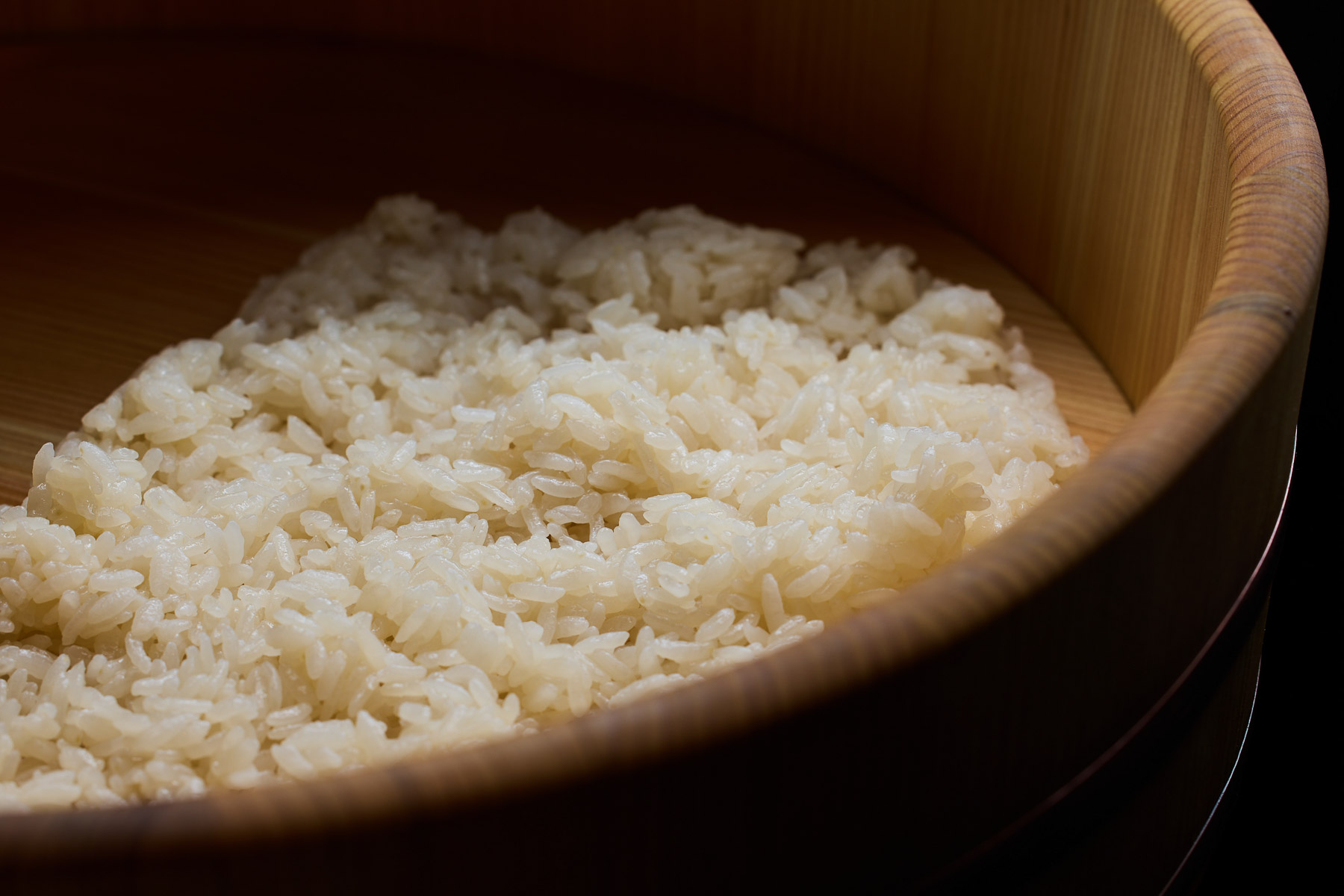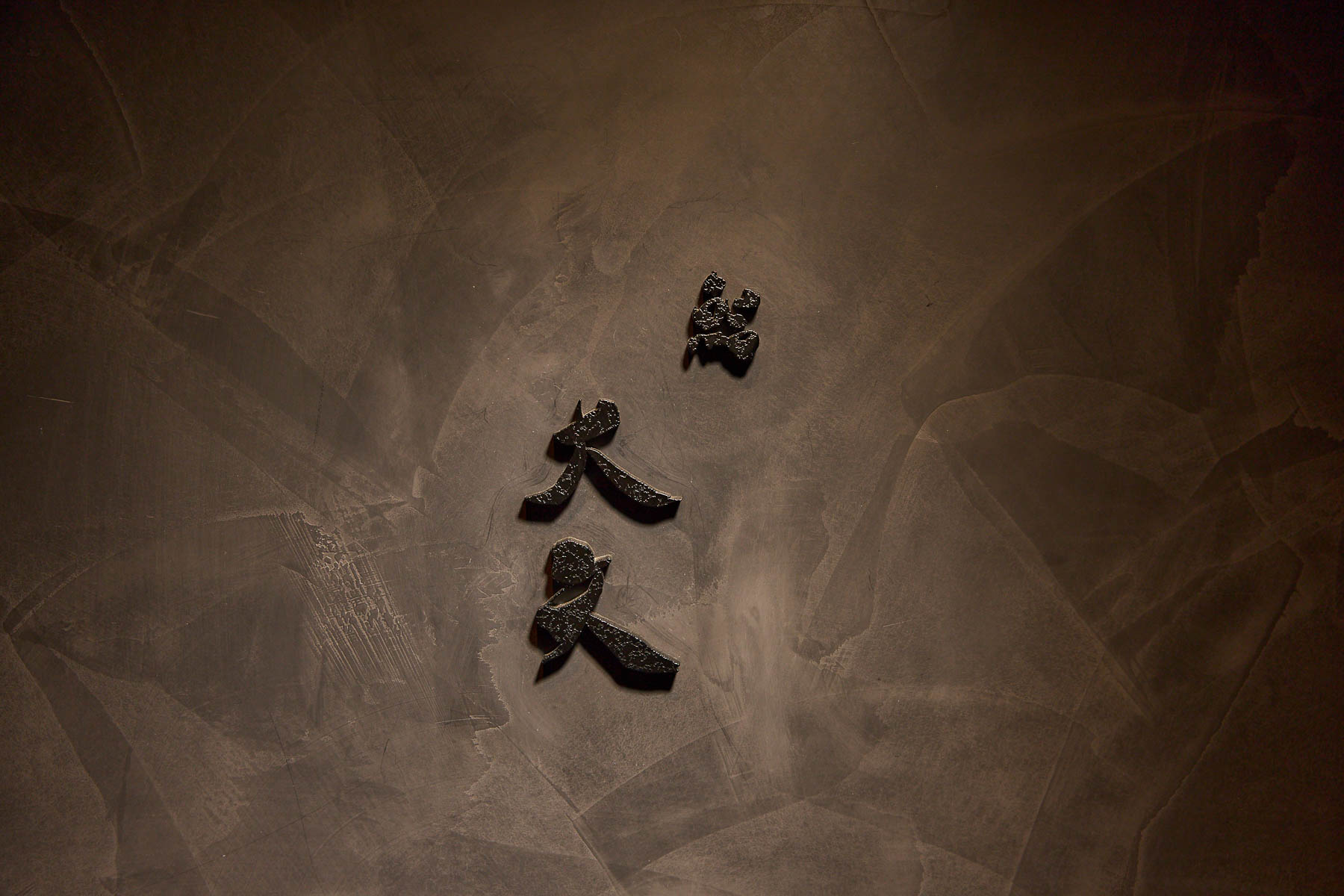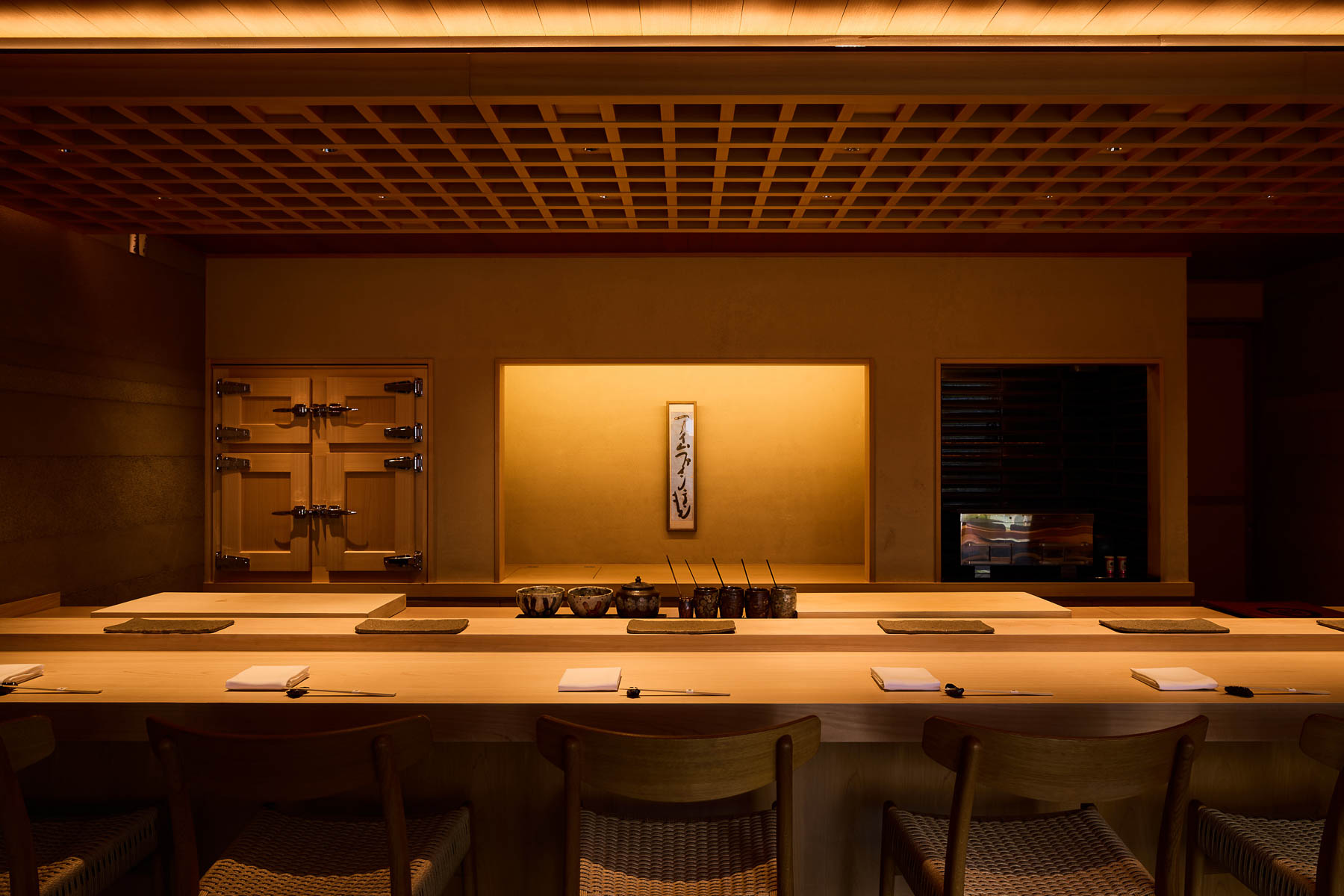
Tokyo
Sushi Oya
鮨大矢
Chef Yoji Oya’s sushi reflects a profound appreciation for Japanese traditions, shaped by the cross-cultural perspective he developed growing up in different countries. In fluent English, he welcomes guests from around the world to a refined omakase experience rooted in authentic Edomae techniques. Signature highlights include delicately steamed abalone and a tuna trio, featuring top-grade akami, chutoro and otoro. From the making of the rice to the selection of tableware, every detail here is considered with the guest’s experience in mind.
Just a short walk from Ushigome-Kagurazaka Station, Sushi Oya is located on a quiet backstreet in this charming neighborhood. Hidden away on the third floor of a building, its entrance is marked with hand-drawn calligraphy by the chef’s wife. Inside, the seven-seat counter, made from a 150-year-old slab of Nara cypress, spans across the room, with a small rock garden in the background. There's also a private six-seat counter, ideal for small gatherings.
From behind the counter, Oya greets his guests warmly. Born in Chicago, he grew up in several countries, navigating different languages and perspectives. After returning to Japan, he trained rigorously at a number of sushi counters, including the award-winning Sushi Yoshitake, where he honed his skills in traditional Edomae techniques.
His international upbringing has deepened his connection to his Japanese heritage, as you can see from the old artifacts displayed throughout the restaurant. The old-fashioned ice box that is built into the counter features a tool that he found in his parents’ home in Niigata, embroidered with the family’s crest. The okamochi-style basket has been modified to store fish, and the beautiful tomobako boxes contain the vinegared rice.
The exquisite collection of tableware also adds to the experience. Many of the pieces are made by Shingo Arakawa, whose designs give a feeling of wabi-sabi, with rabbits, mushrooms, cherries rendered with a gentle hand. For richer courses like monkfish liver, metallic-glazed pieces by Yo Hirose offer contrast and depth.
CUISINE
A profound appreciation for Japanese traditions
The seasonal omakase at Sushi Oya unfolds in a measured progression. The meal begins with a few plates of appetizers that feature the flavors of the month, followed by a dozen pieces of nigiri that progress from light to bold flavors. While the dishes may come across as simple and classic, each bite reveals Oya’s refined craftsmanship and original creativity.
The chilled chawanmushi, or steamed eggs, is flavored with new onions, and topped with sake jelly, pickled umeboshi plum and a scattering of edible flowers. The monkfish liver is paired with red sake and soy sauce, then finished with a dusting of yuzu zest for a citrusy contrast. These small touches keep the flavors bright without tipping into excess.
The steamed abalone, which takes between four to six hours to prepare, is a signature dish not to be missed. It’s slowly cooked using a mixture of water, sake and the abalone’s own juice. The liver sauce adds a deep richness.
Each piece of nigiri is shaped to bring rice and topping into a perfect alignment. The rice is cooked in a hagama pot and seasoned with either red vinegar or rice vinegar, depending on the day’s seafood. Freshness matters—both in the fish and in the vinegar, which is prepared multiple times throughout the evening to keep its flavor sharp and clean.
On the counter, four small brushes sit at the ready: one for light nikiri, one for a darker soy glaze, one for tsume and one for a blend of salt water. The salt water blend, made from birch sap, boiled sake and kombu dashi, has a round flavor, and is used for delicate toppings like squid and shellfish.
Oya sources his tuna from Yunoka, an established wholesaler in Toyosu. He serves the lean akami first, followed by flavorful chutoro and buttery otoro. The sequence allows guests to enjoy the unique texture and flavor of each piece in progression.
The sumiika, or ink squid, is prepared with a subtle knife cut beneath the surface and brushed with the saltwater blend, which brings out the squid’s natural sweetness without overpowering it. Oya’s kohada, or gizzard shad, is a clever piece: layered over vinegared rice with a thin sliver of shrimp tucked beneath the topping, then aged for three to four days until the flavor deepens without losing its freshness.
INGREDIENTS
Oya’s signature tuna is sourced from Yunoka, a specialized wholesaler at Toyosu Market. “My sushi rice is quite strong,” he explains. “So I choose tuna with bolder flavors that can stand up to it.” He prefers cuts with a pronounced aroma and firm flavor, typically from the 110 to 160 kilogram range. He also sources fish from Junichi Fujimoto, a fisherman in Ehime Prefecture whom he’s known for a long time. Additional shipments arrive from Ishiji Port in Niigata Prefecture.
The rice is an original blend by Hachidaime Gihey, known for their refined polishing technique and custom blends tailored for high-end sushi counters. The fish cakes used in the tamagoyaki come from Shinmo, a reputable establishment in Nihonbashi. Wasabi is sourced from Fujiya Wasabi Farm in Nagano.
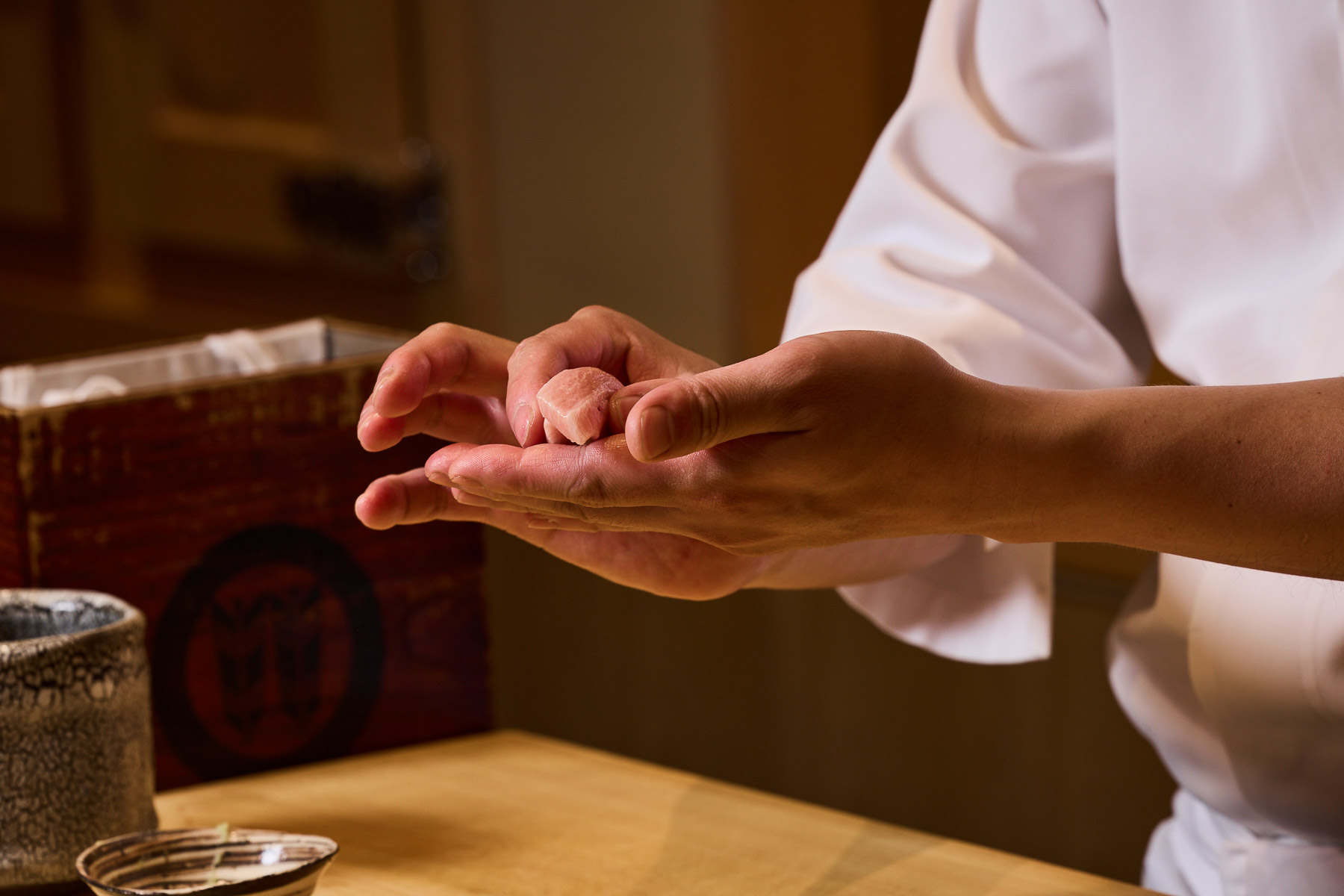
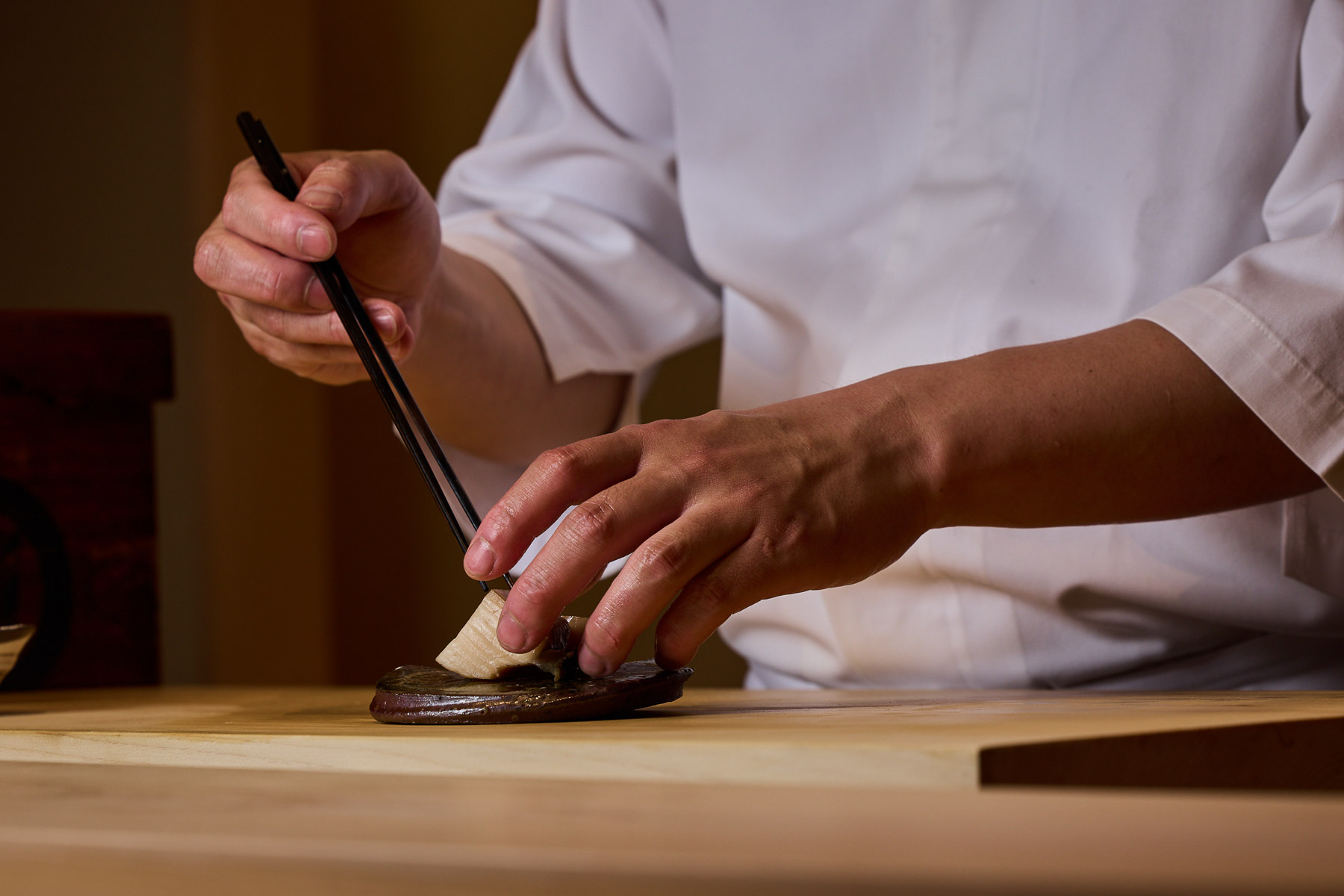
CHEF
Yoji Oya
THE RICE
At Sushi Oya, the making of sushi rice requires thought and constant attention. Oya uses a custom blend created by Hachidaime Gihey, a renowned rice specialist in Ginza. Cooked in a traditional hagama pot, the rice has a pleasing contrast: firm at the edge, soft at the core. The vinegar used to season it is always fresh—so much so that it’s prepared multiple times over the course of the evening to maintain its brightness.
Two types of vinegar are used: red vinegar for richer toppings such as tuna and conger eel, and rice vinegar for more delicate seafood like squid, white fish, shrimp and shellfish. For silvery hikarimono like gizzard shad, Oya chooses the blend based on the unique character of the fish.
Course
- The price includes our booking fee of ¥8,000
- The price includes our booking fee of ¥8,000


